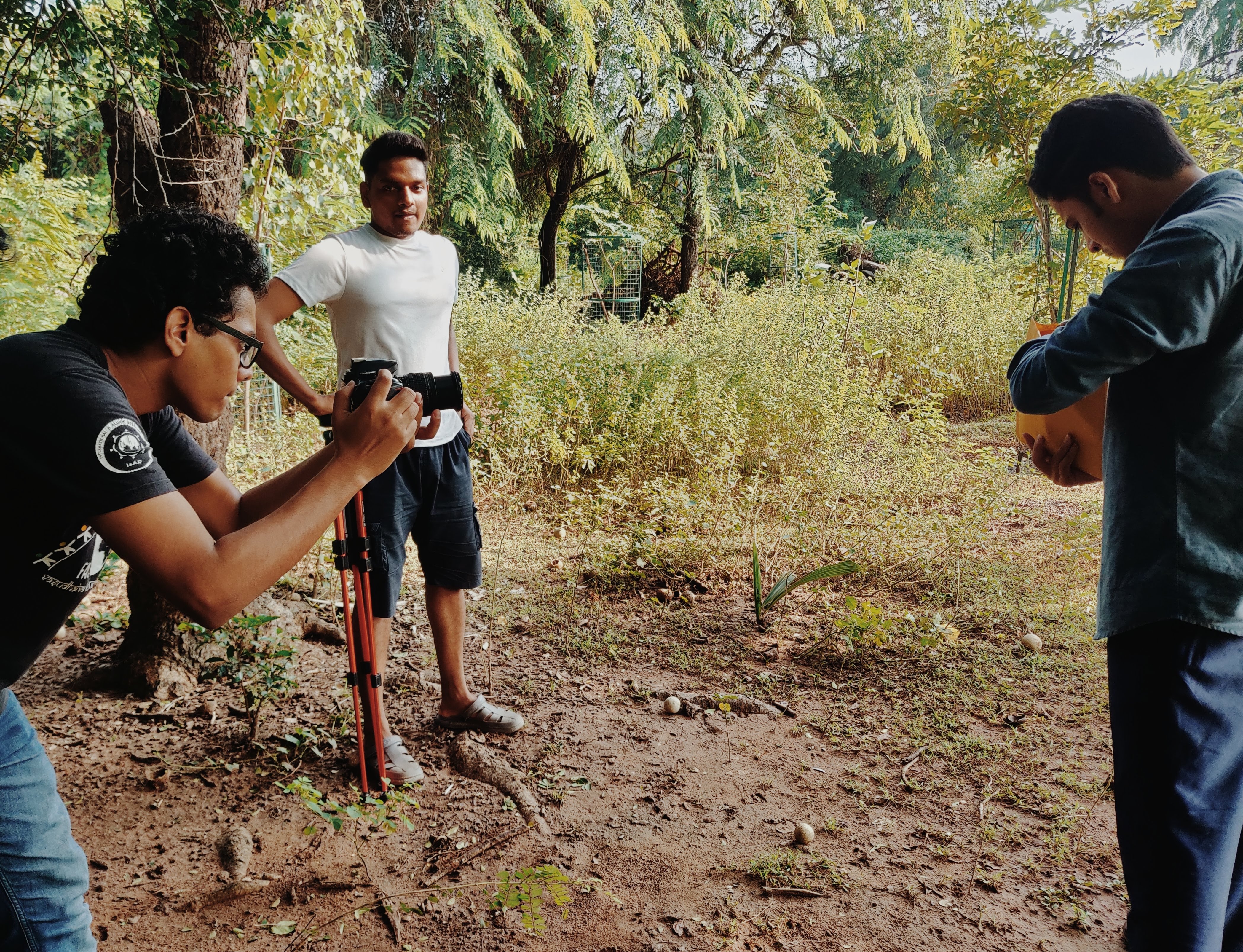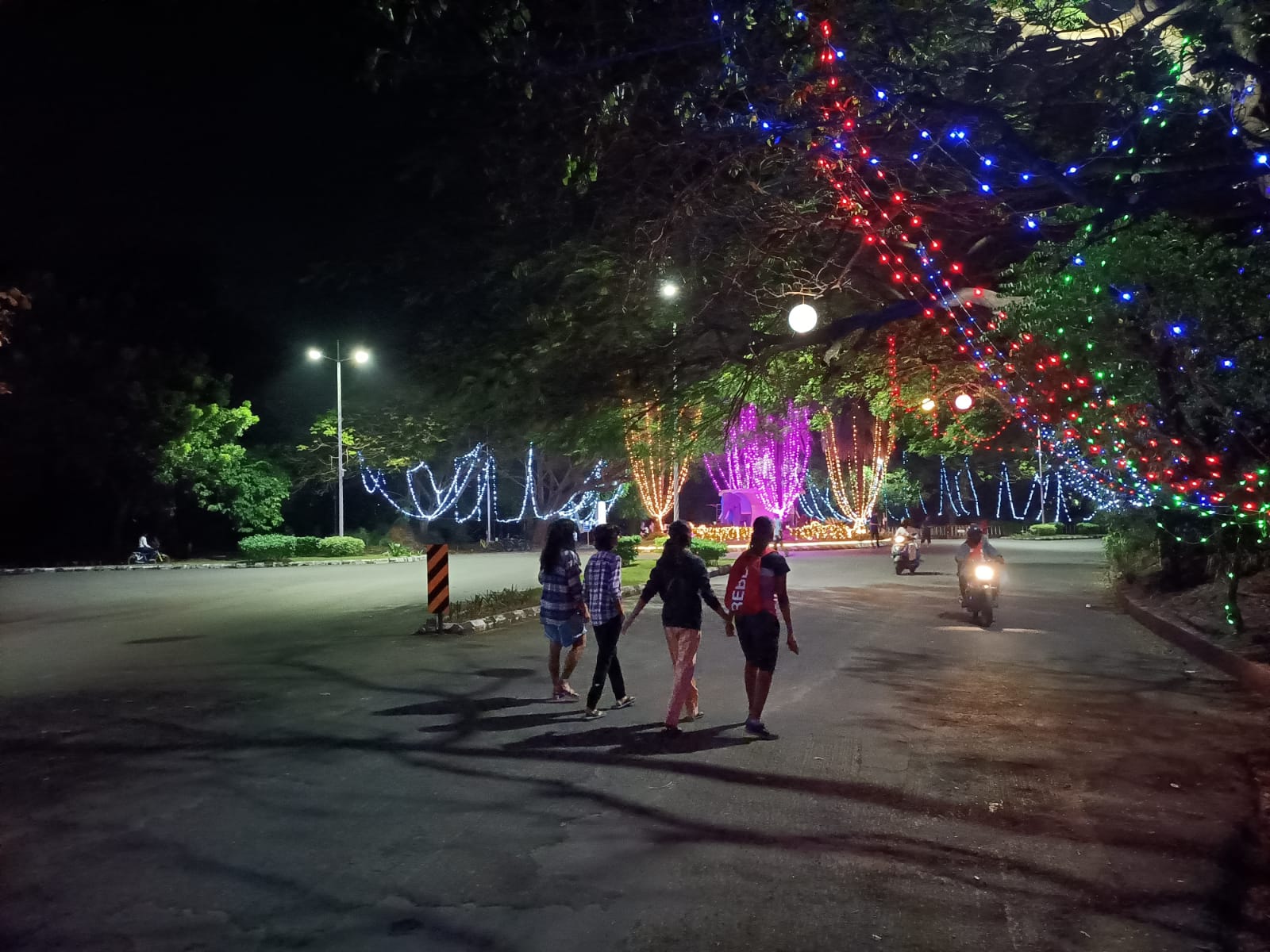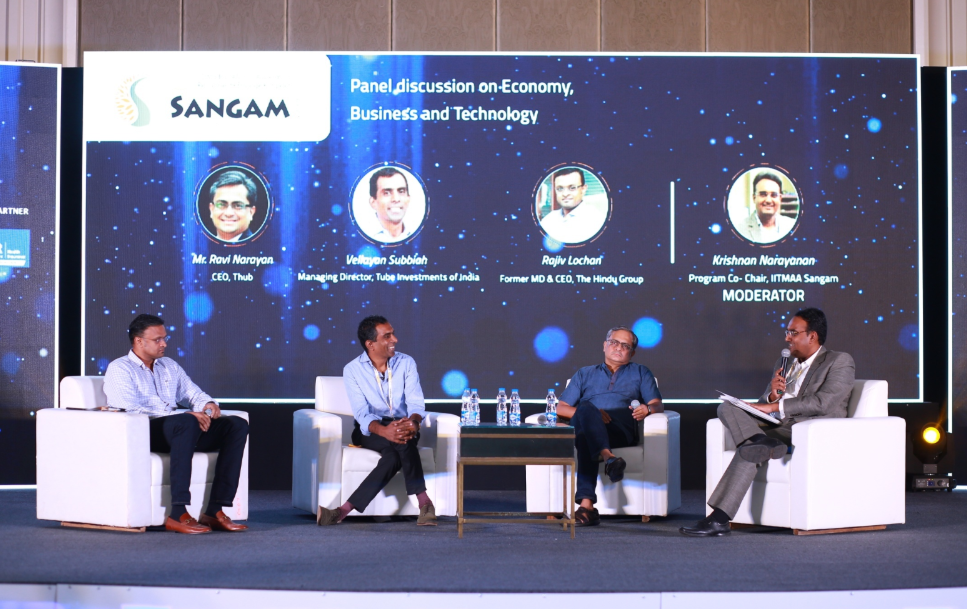Edited by: Sharayu Shejale
Making a film is much like building a perfect sandwich. There are multiple layers and each layer has its purpose. The pickles are just as important as the sauce and together it’s a symphony. Now before I take the food metaphors too far (assuming such a thing is possible), what really goes on behind the scenes of an IITMTV short? Let’s talk about that! (Symbiopsychotaxiplasm style)
For the uninitiated, IITMTV is an in-house YouTube channel run by students obsessed with the art of film-making and with the inter-IITs season rolling in, the team is hard at work preparing its short films. Being a creator for the team myself, I find myself at a unique vantage point to write about what goes on in The Making Of. Let me walk you through the making of Catch-22, the short film we are currently working on. Without revealing too much, Catch-22 is a story about a boy who has been through a severely traumatic event and is grappling with its repercussions.
Now, most films begin with an idea (or a deadline), so the beginning of the whole process is usually met with extensive brainstorming sessions interspersed with repeated viewings of our favourite works for inspiration and repeated recitals of our beloved anthem ABCD from Hum Saath Saath Hain – all in the pursuit of that one elusive idea. The entire story for Catch-22 evolved from the mirror scene in Prisoner of Azkaban in which the camera swerves into a mirror and back in several smooth motions.
Pre-Production
Soon after, the project is put into ‘pre-production’ which is essentially everything you need to complete before the shooting begins. The first layer or the bread is the script, which is the work of the perennially-afflicted-with-writer’s-block writing team. Each element of the script is discussed in an evening meeting and then completed on FadeIn in one continuous all-nighter session. Catch-22 was written by IITMTV Co-Head, Abhijeet Sinha, in one of these aforementioned all-nighter sessions.
Once the story elements are in place, several parallel tasks are put into motion. Contrary to popular belief, there is a lot more to pre-production than just writing and casting, such as the process of ‘story-boarding’ or ‘boarding’ as we affectionately call it. It is best described as a comic-strip-style panel representation of the script that gives a shot by shot breakdown of exactly how the film is going to play out. While they’re usually done professionally, our story-boards are slightly more “rustic” looking with stick figures and other things I’d describe if I knew what they were. Needless to say, sketching is not our forte but the director knows what he has drawn and it gets the job done.
Another fun task is that of location scouting which is basically finding the best as well as most accessible locations to shoot our scenes. Watch out for the SAC music room (which looks surprisingly cinematic), the portion of the street in front of DOMS and the Research Park in Catch-22. Finally comes the scheduling and with that the pre-production is complete.
Production
The shooting is the meat of the film; it begins with ‘blocking’ (whaddup theatre junta) which is a fancy name for what is essentially just the choreography of a scene – how everyone moves, where the camera goes and when. Blocking is followed by the rehearsals and then everything comes into action (pun quite intended). This is where all that effort and planning finally pays off and for a writer or a director, it is quite an experience to watch something that was only once a figment of your imagination actually come into being.
Post-Production
It is common knowledge now that for every second you see, several minutes (if not hours) of footage has been shot. Post-production (which I’d like to think of as the sauce that brings it all together)is the process of mining all that Raw footage and refining it until it becomes the shiny, page-turning ready-to-consume piece of art we all love.
Editing used to be just about stitching sequences together in a manner that made semantic sense, but with all that film culture behind us, film-makers have found so many more innovative ways to present the same thing. One such technique, that has become far more common in recent years, is the Non-linear storyline. There are so many versions of this, but we had our own take in Catch-22.
We also had to do our fair share of VFX for the mirror scenes and they were crucial because this is where it had all started. Foley is another critical part of post-production for crews working without sync-in audio. So fun fact, most of the sound effects that you hear in the short film are ones that have been recreated later and then stitched together with the video footage. It is often said that editing is a thankless job because the less you notice it, the better it is. The final layer is the music and scoring, which is usually so subjective that it is extremely hard to pick the “perfect” track. But just how much music can elevate a scene has often been underestimated.
There’s a lot of thought, time and effort that goes into constructing a simple 10-second clip but much like the building of a sandwich, it’s simply putting together all of the layers that makes the movie magic work.
If you got to the end (in spite of all those horrendous food metaphors which I sincerely apologise for) then voila! You’ve got yourself a neatly constructed short film sandwich. Kya mast aadmi hai tu!
Film-Making for Noobs – An Appendix
- Symbiopsychotaxiplasm – A 1968 experimental film about a crew filming the behind the scenes footage of a crew filming a documentary about another director filming an argument between a couple. If you didn’t quite catch that, fret not. Neither did I.
- FadeIn – A software used for writing scripts by people who can’t afford Final Draft.
- Final Draft – A scriptwriting software we refuse to pay for.
- Raw footage – High quality, unprocessed “virgin” video footage straight from the camera’s image sensor.
- Non-linear storyline – A style of storytelling where the conventional linearity of time is broken and events are portrayed by jumping around in time.
- VFX – Visual effects (Not to be confused with CGI). VFX encompasses any effect that was added in post production and wasn’t shot directly in the camera. The CGI venn circle lies inside that of VFX.
- Scoring – Film score is an original piece of music written and composed specifically for that film. A soundtrack consists of pre-existing music and sound effects as well.
Catch 22 is a short film that will be competing in the online short film competition of the Inter IITs Cultural Meet. It will be screened on the 20th of December. Catch(22) it on YouTube!




